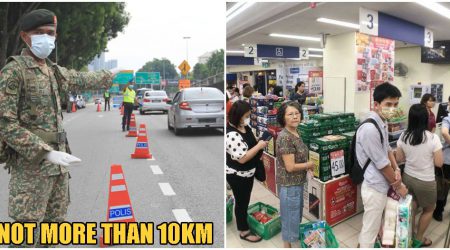China’s tech giants test the waters in fashion metaverse despite slim chance of profits

South China Morning Post
China’s Big Tech companies from ByteDance to Tencent Holdings are testing the waters in the fashion metaverse even though prospects of monetisation and profitability are slim in the foreseeable future.
TikTok owner ByteDance is launching a digital fashion app compatible with the Douyin e-commerce platform and its Pico virtual reality headset, according to a report by Tech Planet.
Meanwhile, social e-commerce app Xiaohongshu is selling virtual fashion items in the form of non-fungible tokens (NFTs), while gaming and social media giant Tencent Holdings has undertaken collaborations with a number of fashion brands for its Peacekeeper Elite game, the localised version of PUBG Mobile.
Both Tencent and ByteDance declined to disclose details of their digital fashion ventures when contacted by the Post.
Andrea Fenn, CEO of digital marketing agency Adiacent China, said the country is ready for a metaverse boom. “Chinese consumers take less time to embrace new ways of doing things with digital channels,” he said.
Moreover, China’s ongoing dynamic zero Covid-19 policy may facilitate the digital transformation, as brands will have to spend their marketing budgets in a way that encourages people to spend while staying at home, Fenn said.
For brands, that means figuring how and where to spend the money within the rules, since China officially banned cryptocurrency transactions last September.
The ban resulted in a limited Chinese audience for blockchain-based Decentraland and Sandbox, metaverse platforms that Western fashion brands have largely embraced. As such, the road to metaverse monetisation can be a winding one for Chinese firms, as the market is still in its infancy.
Kirin Lee, head of Xiaohongshu’s new art and fashion NFT trading platform, known as R-Space, said the 20-person team was set up last year after seeing encouraging signs from the app’s content-creating community.
“Our users, who have high spending power, are open to new things,” he said. The company, seen by some as China’s answer to Instagram, reported 200 million monthly active users at the end of last year.

PHOTO: South China Morning Post
However, the mass audience that propelled Xiaohongshu from a niche lifestyle app to the mainstream has not been enough to lift its ambitions in so-called “digital collectables”, as NFTs are referred to in China to avoid regulatory scrutiny.
In April, Xiaohongshu launched a digital fashion collection in partnership with the organiser of Shanghai Fashion Week, as Covid-19 lockdowns in the city restricted physical catwalks.
The platform invited nine emerging Chinese designers to come up with 20 designs, which consumers can buy using Chinese yuan and real-name identification – legal requirements for all NFT-like transactions in China.
A month after the campaign ended, at least half of the 3,000 NFTs – with prices ranging from 699 yuan (S$144) to 3,999 yuan, similar to the cost of Chinese designer clothing in the physical world – are still on the digital rack. In contrast, lower-priced NFT art is proving to be more popular on the platform.
Only one design – a blue mermaid tail dress by Chen Peng – sold out, but it was only available in four pieces. Of the ten produced, the designer kept six as part of the rules for participation.
Buyers could also send their own full-body digital portrait to the designer, who would create a virtual fashion item using design software.
One of the nine designers who took part in the event, who declined to be named, said the platform offered ten per cent of final proceeds to the brands.
However, it is unclear whether the same commission applies to other projects. R-Space declined to provide further details about its business model but said it was in talks with brands, real estate companies, museums and art galleries for future collaborations.
Xiaohongshu’s digital collectables were minted on Tencent’s Zhixin Chain, a consortium blockchain overseen by the tech giant, which is different from public blockchains used to support cryptocurrencies such as bitcoin and ethereum.
Fenn, the digital marketing specialist, said the restricted blockchain model was an advantage for Chinese tech companies in the fashion metaverse as it limited competition. But for Chinese companies eyeing the global market, the domestic platforms are not their only option.
In March, Shanghai-based Dazzle Fashion joined its Western peers including Dolce & Gabbana and Diesel to participate in the Metaverse Fashion Week on Decentraland. Shanghai-based, youth-focused department store TX Huaihai also built a virtual mall on the ethereum-based platform.
Dazzle Fashion declined to disclose its marketing costs for the event, but said the target audience for the campaign extended beyond fashion consumers to include professionals at home and abroad.
To date, the presence of Western fashion brands in China’s metaverse is limited. Tencent’s Peacekeeper Elite has worked with Chinese brands Peacebird and Lawrence Xu for virtual fashion skins within the game, but based on collaborations with Swedish watch brand Daniel Wellington and the most recent one with Anta-owned Fila, established fashion names are more inclined to launch physical products linked to the game.
Before it can plot a clear path to monetisation, China’s fashion metaverse still has a long road ahead in terms of consumer adoption and education. Research firm IDC forecasts that only three per cent of Chinese netizens will have a virtual identity on Big Tech metaverse platforms by 2025.
On Xiaohongshu, there are around 7,000 posts under the theme “virtual fashion”, whereas the keyword “fashion” has over seven million.
Lee of R-Space believes virtual fashion can be a way for young Chinese to grow their interest in NFTs. “When we ask users what they think about NFTs or digital collectables, they say it looks like a QQ Show,” he said, referring to the feature that users of Tencent’s 23-year-old QQ messaging app can use to dress virtual figures.
“I think it’s acceptable for them to come up with their own definition before truly understanding it,” he added.












Leave a Reply